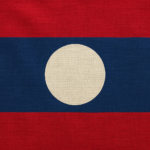
The smallest kite in the world which actually flies is 5mm high.
The largest number of kites flown on a single line is 11,284, this record is held by a Japanese kite maker.
The longest kite in the world is 1034 meters (3394 ft).
The largest kite in the world is the Megabite 55 x 22 meters (630sq meters).
The fastest recorded speed of a kite is over 120 mph. (193 km/h).
The record for the highest single kite flown is 3801 meters (12,471ft).
for a train of kites 9740 meters (31,955 ft).
The world record for the longest ‘kite fly’ is 180 hours.
Kite flying was banned in China during the Cultural Revolution, anyone found flying a kite was sent to jail for up to three years and their kites destroyed.
There are 78 rules in kite fighting in Thailand.
Kite flying was banned in Japan in 1760 because too many people preferred to fly kites than work.
The aeroplane is a development of the kite.
For centuries kites have been used in wars and battles, for signaling, lifting observers, target practice, as barrage kites, dropping propaganda leaflets etc.
The Chinese believe that looking at kites high in the sky maintains good eyesight.
The Chinese believe that when you tilt your head back to look at a kite in the sky your mouth opens slightly, which gets rid of excess body heat giving you a healthy yin-yang balance.
The Chinese name for a kite is Fen Zheng, which means wind harp. The name is derived from early Chinese kites which used to carry wind musical instruments.
Kites were used in the American Civil War to deliver letters and newspapers.
The delta hang glider was a development of flexiwing kite called a Rogallo.
The first powered aircraft were large box kites with motors fitted to them.
The world-renowned father of aeronautical theory was Sir George Caley (1721 to 1790) who lived near Scarborough in Yorkshire. He discovered the difference between lift & thrust and invented the steerable tail and rudder. He also discovered the importance of the dihedral angle for stability of flight and knew the importance of a curved wing.
If a lightweight engine had been invented in Sir George Caley’s time he would have beaten the Wright brothers flight by over 150 years.
Large kites were banned in East Germany because of the possibility of man lifting over the Berlin Wall.
The fastest crossing of the English Channel towed by kites was 2hrs 30min by a team from Flexifoil International in 1999. They would have done it in 2hrs if the French Coastguards had not stopped them 1/2 a mile from the French coast.
In 1985 I was presented to his HRH Prince Charles after winning a British Council travel award to visit kite festivals in China. He told me that whilst on honeymoon on the Royal Yacht Britannia he asked a crew member to launch his kite (a wedding present) from the rear of the yacht. The kite went up so fast the line burnt his hands – he had to let go and lost the kite. He said he learned two things that day, first you must wear gloves when flying kites and secondly remember to tell the captain of the ship to slow down.
The British scholar Joseph Needham said in his book “Science & Civilization in China”, that the kite was the most important scientific device to have come to Europe from China.
When the Japanese were building some of the early temples & shrines, they used large kites to lift tiles and other materials to the workmen on the roofs.
The Russians used kites to tow torpedoes in 1855 with great accuracy.
Ancient stories of fire breathing Dragons were probably a windsock type of kite flown by soldiers in the Middle Ages which had burning tar in the mouth opening to frighten the enemy in battle.
The paragliders that brought back the first space capsules to earth were are development of the Rogallo Kite invented by Francis Rogallo in 1948.
The Rogallo kite was the model for the first hang gliders.
More adults in the world fly kites than children.
In 1826 there used to be a stagecoach service between London and Bristol using kites instead of horses.
There is at least one Kite Festival every weekend of the year in some part of the world.
There are many indoor Kite Festivals.
Kites have been used for centuries for fishing.
Kites are used for bird scaring, forecasting the weather and frightening evil spirits away.
Approximately 12 people are killed each year in kiting accidents throughout the world.
It is now thought that the first kites flown over 3000 years ago, were made from leaves.
In Indonesia leaf kites are still used for fishing.
Kite flying is one of the fastest growing sports in the world.
The Maori tribes from New Zealand made beautiful birdman kites made from bark cloth and leaves.
Kite flying is popular in most countries except for one or two for example, Iceland and Russia, but we are trying to remedy that.
You do not need wind to fly a kite.
Each year on the second Sunday of October kite flyers in nearly every country of the World unite and fly a kite to celebrate “ONE SKY ONE WORLD”.
People were flying kites 1,000years before paper was invented.
Kites have been used for thousands of years to lift offerings and give thanks to the Gods for good harvests, fertility, weather and prosperity.
There are over 50 million kites sold in the USA every year.
Alexander Bell, the inventor of the telephone also developed the tetrahedral kite, which was very successfully used for man carrying.
In the Orient, kites are given to someone to bring them happiness, good luck, prosperity and cure illness.
The modern ram air parachute and paragliders were developed from a parafoil kite invented by the American kite maker Domina Jalbert in 1963.
Baden-Powell (the brother of the founder of the scout movement) did lots of successful experiment with man lifting kites.
Samuel Franklin Cody who invented the Cody man-lifting kite system was the first man to cross the English Channel towed by kites in 1903.
In 1908 Samuel Franklin Cody was the first man in England to build and fly a powered aircraft, (a large box kite fitted with a small engine).
Samuel Franklin Cody was the first man in England to be killed in a powered aircraft accident – 1913.
In 1901 Marconi used a Hexagon kite to transmit the first radio signals across the Atlantic, the kite line was used as the aeriel.
Benjamin Franklin used a kite to prove that lightning was electricity.
Lawrence Hargrave was an English man who emigrated to Australia where he invented the box kite in 1893.
In 1847, a young boy won a competition to fly and land a kite on the other side of the Niagara River. They then used the kite line to pull larger cables over the river, enabling them to start work on building the first railway bridge between Canada and the USA.
Some Japanese kites weigh over 2 tons.
One of the longest Chinese Dragons I have seen flying was over 600 meters long.
Kites have been used in many sea rescues.
Frequently Asked Questions about Kites:
1. What are the different types of kites?
- Diamond Kite:
- The classic, most recognizable kite shape.
- Simple to assemble and fly, making it ideal for beginners.
- Typically made with two crossed spars forming a diamond shape.
- Stable in moderate winds.
- Delta Kite:
- Shaped like a triangle or delta wing.
- Known for its stability and ability to fly in a wider range of wind conditions.
- Often used for stunt flying and aerial photography.
- Provides good lift and responsive handling.
- Dopero Kite:
- A two lined stunt kite, that allows for many aerobatic maneuvers.
- Requires practice to master.
- Very popular with sport kite flyers.
- Parafoil Kite:
- Soft, frameless kite that inflates with wind.
- Highly portable and easy to pack.
- Excellent for generating power and lift.
- Used for kite surfing, kite buggying, and power kiting.
- Can be more challenging to launch in light winds.
- Box Kite:
- Three-dimensional kite with a box-like structure.
- Very stable and capable of flying in high winds.
- Provides significant lift and pulling power.
- Often used for scientific research and aerial photography.
- Cellular Kite:
- A kite constructed of many cells. These cells can be different shapes, and sizes.
- Very stable and can generate large amounts of lift.
- Often used for very large displays.
- Novelty Kites:
- Kites shaped like animals, characters, or other objects.
- Designed for visual appeal and entertainment.
- Can range from simple to complex designs.
- Often single lined kites.
2. How do kites fly?
- Kites fly based on the principles of aerodynamics, specifically lift and drag.
- Lift:
- As wind flows over the kite’s surface, it creates a difference in air pressure.
- The air pressure below the kite is higher than the air pressure above, generating an upward force called lift.
- The angle of attack (the angle between the kite’s surface and the wind) plays a crucial role in generating lift.
- Drag:
- Drag is the force that opposes the kite’s motion through the air.
- It is created by the friction between the air and the kite’s surface.
- Drag can also be beneficial, as it helps to stabilize the kite.
- Tension:
- The kite line itself transfers the lift generated by the kite, to the person flying it.
- Wind:
- Consistent wind is required for a kite to fly.
- The strength and direction of the wind affect the kite’s stability and performance.
3. What materials are used to make kites?
- Sail Material:
- Ripstop nylon: Lightweight, durable, and water-resistant.
- Polyester: Another durable and affordable option.
- Tyvek: A synthetic material known for its strength and tear resistance.
- Paper: Traditional material, used for smaller kites.
- Frame/Spars:
- Fiberglass: Strong, flexible, and lightweight.
- Carbon fiber: Extremely strong and lightweight, used in high-performance kites.
- Wood (bamboo, spruce): Traditional material, used for some kites.
- Lines:
- Dacron: Strong, durable, and low stretch.
- Spectra/Dyneema: Extremely strong and low stretch, used in high-performance kites.
- Nylon: used in some lower cost kites.
4. How do you launch a kite?
- Check the Wind:
- Ensure there is a steady wind blowing in a consistent direction.
- Avoid flying in gusty or turbulent winds.
- Position Yourself:
- Stand with your back to the wind.
- Ensure there are no obstacles or power lines nearby.
- Unwind the Line:
- Unwind enough line to allow the kite to catch the wind.
- Launch the Kite:
- For single-line kites, hold the line and let the wind lift the kite.
- For dual-line kites, use a controlled launch technique to guide the kite into the air.
- Have a helper hold the kite up into the wind and let go when the wind catches it.
- Adjust the Line:
- Adjust the line tension to keep the kite flying steadily.
5. What safety precautions should you take when flying a kite?
- Avoid Power Lines:
- Never fly kites near power lines.
- If a kite gets tangled in power lines, do not attempt to retrieve it.
- Check the Weather:
- Avoid flying kites in thunderstorms or strong winds.
- Be aware of changes in wind conditions.
- Choose a Safe Location:
- Fly kites in open areas away from trees, buildings, and roads.
- Ensure there is enough space for the kite to fly safely.
- Use Appropriate Line:
- Use a line that is strong enough to handle the kite and wind conditions.
- Avoid using metal wire, as it can conduct electricity.
- Wear Gloves:
- Wear gloves to protect your hands from line cuts, especially when flying power kites.
- Be Aware of Others:
- Be mindful of other people and avoid flying kites in crowded areas.
- Keep an eye on children.
- Never fly in rain:
- Wet kite lines can conduct electricity.
- Never fly during a lightning storm:
- Kite lines can conduct electricity.
6. How do you do kite stunts?
- Dual-Line Kites:
- Stunt kites require dual lines for precise control.
- Practice basic maneuvers like loops, figure eights, and dives.
- Control Techniques:
- Learn to use subtle movements of your wrists and arms to control the kite.
- Practice coordinating your movements to perform complex stunts.
- Practice and Patience:
- Stunt flying requires practice and patience.
- Start with basic maneuvers and gradually progress to more advanced techniques.
- Learn from Others:
- Join a kite flying club or watch online tutorials.
7. How do you store a kite?
- Disassemble the Kite:
- Carefully disassemble the kite, removing the spars and folding the sail.
- Store in a Dry Place:
- Store the kite in a dry place to prevent mold and mildew.
- Avoid storing kites in direct sunlight, as it can damage the materials.
- Use a Kite Bag:
- Store the kite in a kite bag to protect it from damage.
- Keep lines from tangling.
- Check for Damage:
- Before each use, check the kite for any damage, such as tears or broken spars.









